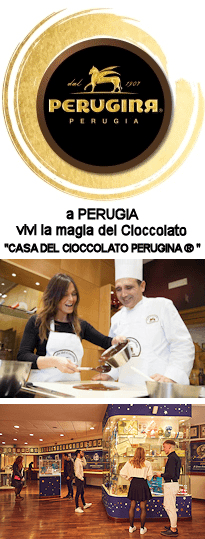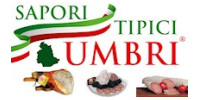Umbria, with its history stretching back over thousands of years into its golden age during the Middle Ages, is simply a goldmine for those who have a passion for ancient documents and manuscripts. Possibly the region’s best known written artefact are the Iguvine Tables, in the second room of Gubbio’s Palazzo Dei Consoli. The Iguvine Tables are a series of seven bronze slabs dating from between the 2nd and 1st century BC, inscribed in ancient Umbrian using both the Etruscan and Latin alphabets. Many regard these slabs as the most important example of ancient writing in the western world, on a par with the Rosetta Stone that was instrumental for deciphering the Egyptian hieroglyphs. The texts on the Tables offer a detailed description of the main religious ceremonies of Ikuvium (the ancient name for Gubbio) and were unearthed near a Roman amphitheatre in 1456 by Paolo di Gregorio, who that same year gave them to the City of Gubbio in exchange for grazing land.
The reliquary chapel of the Duomo of Spoleto contains a signed letter by St Francis to Brother Leone, in which the saint attempts to allay Leone’s anguish and doubts with words whose humanity and sincere tenderness will surprise even the contemporary reader. In true Franciscan spirit, the text is a manifesto of freedom of thought: "in whatever manner it will please thee to please the Lord our God, to follow His example and poverty, do so with the blessing of the Lord and my obedience".
The twenty-one Matricole delle Arti e dei Mestieri di Perugia, kept in the Augusta library, are certainly also worth a note. These manuscripts, many of which are beautifully illuminated, were written between the 14th and 19th century and are transcriptions of the lists of members of Perugia’s city guilds and corporations.
Umbria is also a region of historic importance in terms of printing: on April 11th 1472, in Foligno, Giovanni Numeister issued the first printed copy of Dante’s Divine Comedy, an even that is commemorated each year in Foligno with a series of interesting initiatives.
In the Terni area, visitors should pay a visit to the 13th century Palazzo Comunale of Stroncone, which has a series of illuminated 15th century manuscripts along with a collection of beautifully crafted coins, medals and seals dating from different periods.
------------------
Umbria...Cuore verde d’Italia. Percorsi d'arte, Agenzia di Promozione turistica dell'Umbria, Perugia, pg. 60, with thanks.
Our network:
Wednesday 20 November 2024
Ancient documents and illuminated manuscriptsAll'inizio |

| THEMATIC HOLIDAYS | go |
• Ancient documents and illuminated manuscripts
• Renaissance Umbria
• Umbria the Poet’s Muse
• Umbria With the Kids: Perugia’s Città della Domenica
• Golf & Art in Umbria
| WINE AND FOOD | go |
• Typical Umbrian dishes
• Umbrian cuisine
• Typical Umbrian produce, where to buy and where to taste
• Typical Umbrian food
• Wine Tours in Umbria
• Umbrian Wines and Regional Wine Trails
• Enoteche, vinerie and wine bars in Umbria
• Umbrian Wines
• Wineries and wine tasting in Umbria
| ITINERARIES | go |
• Contemporary art in Umbria
• The female saints of Umbria
• Benedictine monasteries
• Ancient castles and fortresses
• Guided tours and itineraries in Umbria

| PARKS AND NATURE RESERVES | go |
• Lake Trasimene
• Parco Fluviale del Tevere
• Parco Regionale del Lago Trasimeno
• Parco Regionale del Monte Subasio
| WHAT TO SEE & DO | go |
• Cooking courses in Umbria
• The Nahar adventure park, enclosed within one of Italy 's largest alpaca farming areas, offers tourists the chance to spend a day experimenting new sports and generally having a good deal of fun in an unparalleled natural setting!
• PIERMATTEO D’AMELIA and the Renaissance in Southern Umbria
• FRANTOI APERTI Following the DOP Umbria quality olive oil trail
• Wedding in Umbria
• MAP of UMBRIA to travel in Umbria
• Tourist guides of Umbria
• Quality produce - sustainable success stories
• Oil mills and producers across the region Umbria
• Academies, Schools in Umbria and Italy
• Exhibition Perugino, divine painter
• Itineraries & Packages
Booking.com
• Beauty Farms in Umbria
• Wellness in Umbria: opportunities for tourists
• Spiritual Retreats in Umbria
• Dermocosmetici Oro of Spello for protecting your skin
• Wellness in Umbria
• Rafting
• Paragliding and Hang-Gliding
• Horse Riding in Umbria
• Golf in Umbria
• Umbria by Bike
• Getting married in Umbria
• SM.MA. rental of equipment, marquees and gazebos for catering and banqueting
• Company meetings in Umbria
• Venues and Entertainers for Events in Umbria
• San Gemini - Centro Congressi
• Park Hotel ai Cappuccini in Gubbio
• Events and Cerimonies in Umbria – Deals and Offers
• Conferences and Conventions – the Advantages of Choosing Umbria

• Textiles and Lace-Making in Umbria
• Deruta Ceramics
• Cabinetmaking in Città di Castello
• Woodcarving in Umbria
• Ceramics in Umbria Art and Tradition
• The Ceramics of Deruta

| BEAUTY & WELLNESS | go |
• Wellness in Umbria: opportunities for tourists
• Spiritual Retreats in Umbria
• Dermocosmetici Oro of Spello for protecting your skin
• Wellness in Umbria
| SPORT | go |
• Paragliding and Hang-Gliding
• Horse Riding in Umbria
• Golf in Umbria
• Umbria by Bike
| WEDDING | go |
| MICE (MEETING INCENTIVES CONFERENCES EVENTS) | go |
• Company meetings in Umbria
• Venues and Entertainers for Events in Umbria
• San Gemini - Centro Congressi
• Park Hotel ai Cappuccini in Gubbio
• Events and Cerimonies in Umbria – Deals and Offers
• Conferences and Conventions – the Advantages of Choosing Umbria

| HANDICRAFT | go |
• Deruta Ceramics
• Cabinetmaking in Città di Castello
• Woodcarving in Umbria
• Ceramics in Umbria Art and Tradition
• The Ceramics of Deruta









